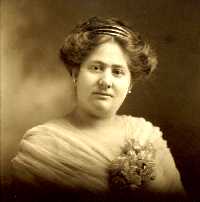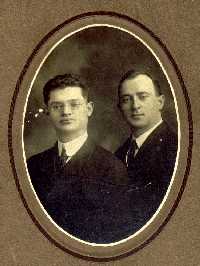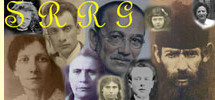|
European family ideals
American Style
Family - people and memories - the word evokes an emotion in all of us, good or bad.
In the old country, the immediate and extended families were a cohesive group. Their collective strength and voice withstood the might of monarchs. Chassidism evolved around this need, becoming a united political force. There was no distinction between relatives. Aunts and uncles were parents to their nieces and nephews; children were sister and brothers to cousins. "The Family" became an "ideal" which immigrants, particularly strict observant Jews, carried to the New World along with their personal treasures.
Chana and Fischel were orthodox - it's possible, too, some Reiter ancestors were Chassidic. I stumbled upon the possibility when I asked experts, knowledgeable about origins of names, what they could tell me about the first name of one of Fischel's older brothers, Sachnuyt Reiter (c 1833-?). Their explanations were interesting, but not definitive, because there is no way to find documents to support the theory. The name Sachnuyt and the spelling is rare. Particularly different is that it doesn't appear to have been used or given again, as evidenced from the 700 plus family documents I have (mid 1700s-1941) from Warsaw, Poland archives.
Today, in Israel, the word Sachnuyt means "agency". I conjecture the name Sachnuyt, generations back, could have been given to identify a member or descendant of the "group". The "group" called the Breslov chassidim, still exists. Were Fischel's ancestors members? I don't know, but clicking on the following two links containing various correspondence related to this question, will fill you in on what I learned.
Sachnuyt correspondence
Breslov
Sources say the Zukers(2), were Sfardic - originating from Spain. Adolph's naturalization papers state his skin tone was dark. Max and Esther Leah (first cousins to each other) immigrated around 1900, marrying soon after. Their marriage certificate, (a copy sent to me, courtesy of their youngest child, Rose), states Esther Leah's surname as Sugar, the translation of Zuker. The Reinsteins(3), may have been orthodox or conservative. Max, by the way, like Julius Reiter, was helpful to newcomers, witness to marriage certificates and naturalization papers for our family.
Dr. Charles Reinstein, son of Max and Esther Leah was a successful New York dermatologist, (also known for his marriage to Norma(4) Spitalny), changed his last name to Rein. My mother's first cousin Sidney Weisbach, dentist, changed his name to Weis.
It was difficult for immigrants, especially Jews, to be accepted into medical schools and other professions during this time period, 1920s-50s and some people chose to adopt new surnames, shorten their given name, and even marry non-Jews in hope of bypassing this obstacle.
|
 |
|
|
Esther Leah - Adolph's maternal aunt |
My mother, wanted to adopt American lifestyle and take in all that she saw around her. Chana, the matriarch, held tight to her upbringing and religious beliefs, chiding Lena for not keeping a kosher home and/or applying Jewish rituals. Adolph, a chassidic Levite by birth (Levites assisted the priests), in practice was not a strict observer. My brothers, Phil and Frank, tell me our father intellectually rejected religious extremism, having been influenced by the writings of great philosophers, especially Spinoza. If anything, socialistic ideals--giving a voice in support of the "working man", was more or less Adolph's religion.
Leibish/Louis immigrated to New York in 1890 (age 34), Julius 1900 (age 18). The two older brothers and families had adapted to America by the time Hyman (changed his name to Herman) and his sister Lena immigrated in 1913. Julius' wife, Lena Shkolnik, spoke English well enough that years later, my sister Helen was shocked to learn her aunt had been an immigrant. Louis, in his fifties by now was just making a living.
|
 |
|
|
Hyman and Julius Reiter c 1913 |
In spite of the individualities of my father and his brothers-in-law, family unity prevailed. My uncles were very close. Hyman loved Louis and Julius. According to his daughter, Rosalie, "Hyman put Julius (ten years older) up on a pedestal". The brothers were outgoing, kind and warm, having much to share--male interests and work. Lena loved and admired her older siblings, too, and I'm sure they her, but in different ways. As the youngest and only female, my mother was not one of the men. If there had been sisters, Lena could have enjoyed comradship and the emotional support she needed. But as things were, except for her parents, especially Fischel, Lena was alone--having left the huge Reiter family behind in Mielnitza.
The brothers and sister respected their parents, Chana and Fischel. Julius, more established, with a giving nature or sense of duty to his parents, continued looking after them. The 1920s B'Nai Israel ledger notes record Julius as a member of the conservative synagogue. He paid dues for his family, Chana, even Hyman one year and made monetary donations. It's possible Chana and Fischel were members of the Anshei Sfardic orthodox shul next door (see pictures chapter 6) when they arrived in Toledo, and the fact that they chose an orthodox rabbi for Lena's wedding (see Chapter 7).
B'Nai Israel archival records, Toledo, Ohio
|
|




